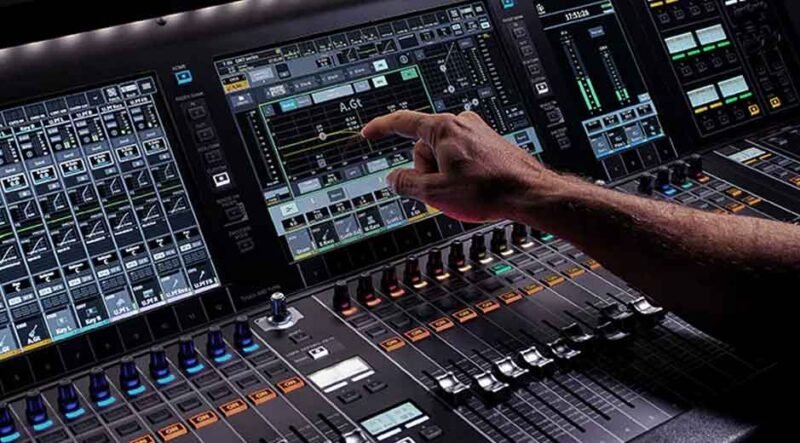Small venues have their own unique challenges when it comes to live sound. Whether it’s a cozy jazz club, a packed coffeehouse, or a 200-seat performance hall, achieving clarity without overwhelming the space is an art. The heart of this process? The sound console. This piece of equipment is responsible for balancing instruments, shaping vocals, and ensuring audiences hear every detail as intended.
In 2025, sound consoles are smarter, more compact, and more intuitive than ever before, making them ideal for both seasoned audio engineers and musicians running their own shows.
The Growing Role of Smart Features
Modern consoles aren’t just about knobs and faders anymore. They now integrate software-driven enhancements that simplify mixing and improve sound quality without endless tweaking. Some even incorporate AI music tools that help automate EQ adjustments, predict potential feedback issues, and suggest mix improvements on the fly. This is especially valuable in small venues where one person often handles multiple roles, from sound engineering to event coordination.
Key Factors When Choosing a Console
When selecting a live sound console for a small venue, consider more than just the price. The right choice balances quality, usability, and scalability. Here’s what to prioritize:
1. Size and Portability
Compact consoles are easier to transport and set up, which is crucial in smaller spaces where every square foot matters. Lightweight digital mixers have become the go-to option for mobile performers and small venue managers alike.
2. Input and Output Flexibility
Even in small venues, you might have multiple microphones, instruments, and playback sources. Look for a console with enough channels to handle your current setup and future growth, whether that’s 8, 16, or more inputs.
3. Onboard Processing
Built-in EQ, compression, and reverb save time and reduce the need for additional gear. This is especially helpful when you’re working with limited budgets or minimal rack space.
4. User-Friendly Interface
Ease of use matters. A simple touchscreen interface or clearly labeled controls can make a world of difference for beginners and reduce setup stress during live events.
Top Live Sound Consoles for 2025
Here are some standout models making waves this year:
Yamaha TF1 Digital Mixer
A staple for small venues, the TF1 offers intuitive touch controls and excellent preamps. Its “TouchFlow” operation makes it easy for users at any skill level to dial in a professional mix quickly.
Behringer X32 Compact
Still a favorite in 2025, the X32 Compact combines affordability with versatility. It offers a robust set of features, including 40 input channels, built-in effects, and seamless integration with digital stage boxes.
Allen & Heath CQ-20B
Designed for performers and engineers on the move, the CQ-20B is fully controllable via mobile devices. It’s compact, wireless, and ideal for bands who want high-quality mixing without lugging around heavy gear.
Soundcraft Ui24R
This rack-mountable console offers wireless control, 24 input channels, and a user-friendly browser-based interface. Perfect for small venues that want high channel counts without sacrificing portability.
The Rise of Digital and Hybrid Solutions
Digital consoles are dominating the market, but hybrid models—combining analog warmth with digital flexibility—are gaining traction among purists who want the best of both worlds. These consoles often include motorized faders and touchscreens, catering to those who value tactile control while benefiting from modern automation and presets.
Practical Tips for Small Venues
- Plan for growth. Even if you’re mixing for a three-piece band now, choose a console that can handle a larger ensemble later.
- Invest in training. A great console is only as good as the person using it—spend time learning its features or consider short workshops for your staff.
- Prioritize reliability. Live sound doesn’t allow for do-overs. Choose a model known for durability and strong manufacturer support.
- Leverage remote control. Many modern mixers allow tablet or smartphone control, letting engineers adjust sound from anywhere in the room.
Looking Ahead: Where Technology is Heading
In the next few years, expect even deeper AI integration, cloud-based mix storage, and seamless connectivity with other performance tools like lighting systems. For small venues, this means professional-grade sound will continue to become more affordable and easier to manage—even for non-experts.
Final Thoughts
The perfect sound console for a small venue balances quality, simplicity, and adaptability. With the rapid evolution of technology in 2025, even budget-friendly options can deliver crystal-clear mixes once reserved for major concert halls. Whether you’re outfitting a new performance space or upgrading outdated gear, the right console will transform your audience’s listening experience—and your performers’ confidence on stage.








